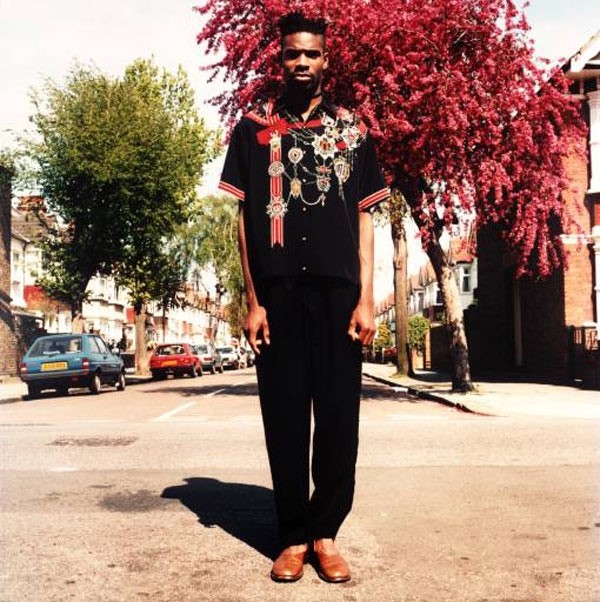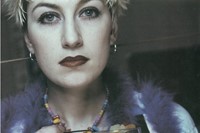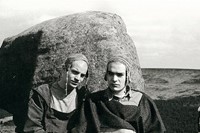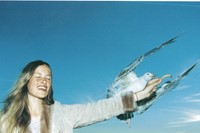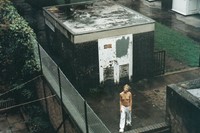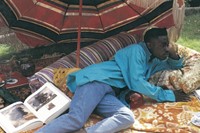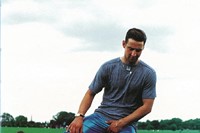During the 1990s the glitzy, untouchable sheen which spread across much of 80s fashion photography was largely fazed out in favour of a far grittier, documentary-like sense of reality...
During the 1990s the glitzy, untouchable sheen which spread across much of 80s fashion photography – often seen as a reaction against the economic depression of the time – was largely fazed out in favour of a far grittier, documentary-like sense of realism; a tarnished world of second hand clothing, street-cast models and a punky DIY aesthetic and attitude. This captured the interest of photographer Jason Evans who, in 1998, set about compiling and editing a volume of images (entitled W'HAPPEN) that he felt embodied the best of 90s fashion photography, his aim to document the radical changes pioneered by the decade’s photographers and stylists.
Evans launched his career assisting influential photographer Nick Knight at i-D Magazine: “My agenda was learned from Nick Knight and Simon Foxton...photograph what you see and what you want to see.” This stance resonates throughout W’HAPPEN which – through the works of inspirational photographers like Knight and Foxton, as well as Craig McDean, Wolfgang Tillmans, Juergen Teller and Marc Lebon – shows the photographic responses of the early 90s to be “much broader, more idiosyncratic and less nostalgic” than many imagine of the “heroine chic” era. Now, following its recent republication by Antenne Books, Evans urges readers to "consider its various levels of engagement and critique...and its responses to a shifting economic and political landscape, not unlike the ones we are witnessing here and now."
Here, we talk to Evans about the book, fashion photography's progression since its publication and the renewed appreciation for a 90s aesthetic...
What were the key themes you wished to highlight through your choice of images in W’HAPPEN?
I chose the images and photographers that resonated for me personally from that time. I couldn't get all the ones I wanted but it's not far off. I should have had more work by David Sims and Adam Howe. For me it was about fashion photography as positive social culture.
"For me W'HAPPEN was about fashion photography as positive social culture"
You say that people are beginning to turn back to the 90s for an alternative aesthetic, what do you think were the strongest visual elements that the 90s had to offer?
I see that there are 90s visual/stylistic references popping up now we're done with the 80s rehash. It could be interesting to engage with the broader themes/issues that were found in early 90s photography rather than just trying to recreate "the look". A lot (but by no means all) of 90s editorial work took its cue from realism and the documentary tradition. There is a mind boggling wealth of stunning human culture in the world, open your eyes and look beyond the closed circuit of fashion referencing. I mean, look at the folks from Tonga at the Olympic opening parade. That's more exciting to me than any fashion I'll find on the news stands this month.
What do you make of fashion photography’s progression since the 90s? In what areas do you feel it has improved, or declined?
It feels a bit gloomy the last few years. Self-conscious and too much referencing. Too much retouching and too much "design-by-committee". The advertisers need to loosen their grip or the symbiosis they have with the publishers will be little more than parasitic. Editorial teams need to stop kissing ass and cast their nets beyond the drip feed press release inbox syndrome. I'm thankful for Penny Martin.
Do you have a favourite image from the book?
Nigel Shafran and Melanie Wards' collaboration.
What makes a good fashion photograph?
Team effort.
Which new photographers do you currently admire?
Miyoko Ihara, Jessica Eaton and Anouk Kruithof. (You can see a bunch of stuff I respect in the Contemporary Japanese Photobook show at the Photographers' Gallery in London until September 9).
What inspires your practice?
Being alive.
What are you working on at the moment?
Being alive a bit longer, a book for Mack, shows in Canada and Korea, a children's book in Japan, some portraits, Margate Photography Festival, Krakow Photomonth 2013 and new artwork for Four Tet.
What is your dream project?
I don't think like that, I try to experience what I'm given. Sometimes it fucks up, and if you're smart you can learn from the mistakes.
What’s the best piece of advice you’ve ever been given?
I'm way too contrary to accept good advice.
W'HAPPEN is published by Antenne Books and is available now.
Text by Daisy Woodward
